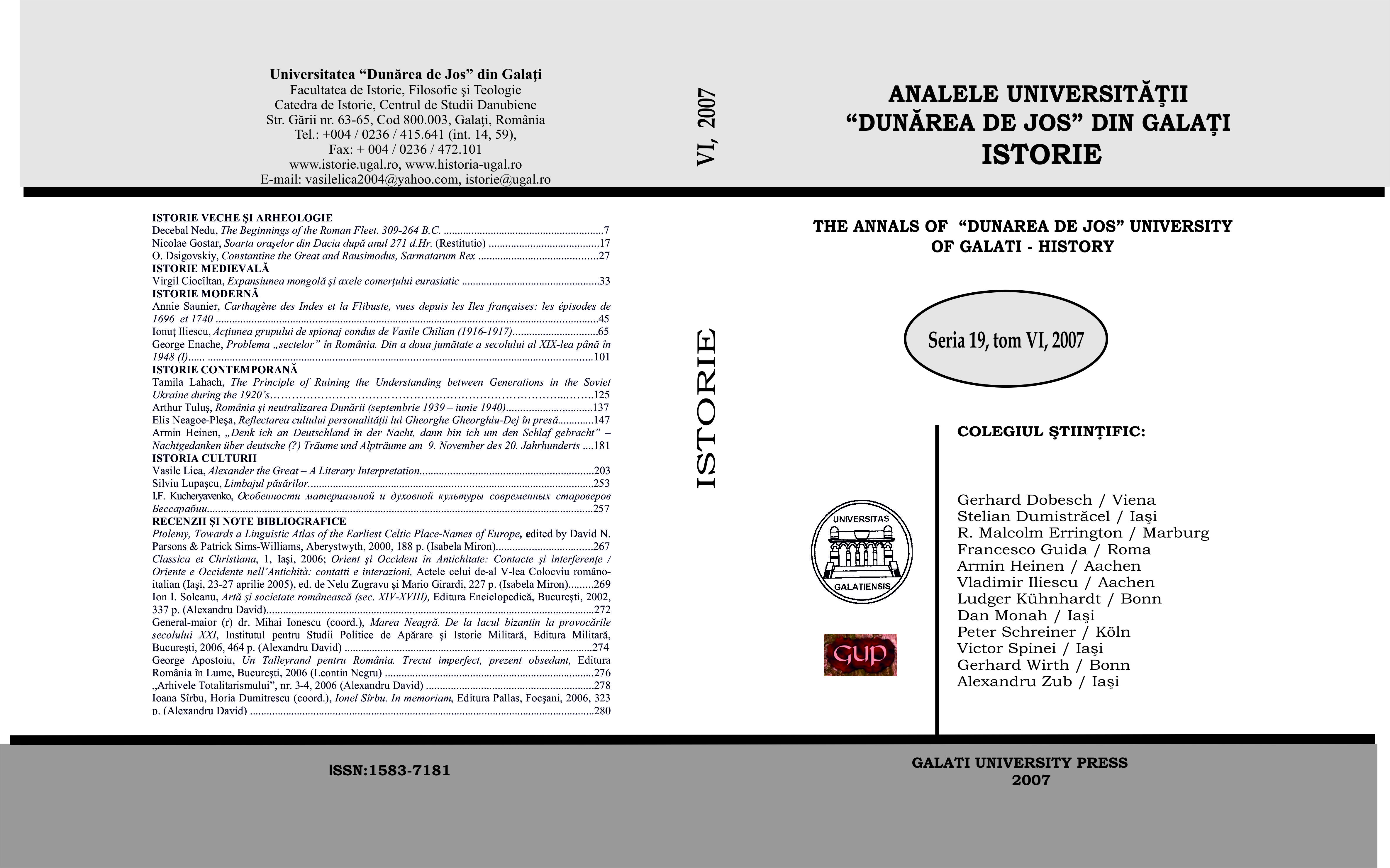

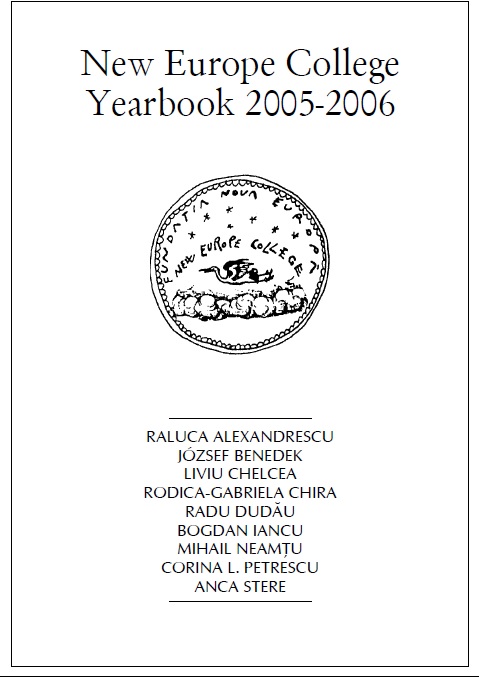
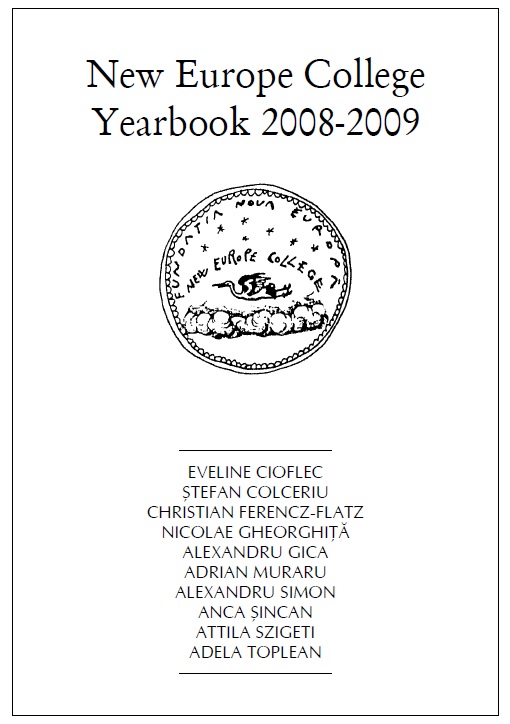
Keywords: “hybrid” fibulae; Thracian scheme fibulae; La Tène scheme fibulae;typology;
The following discussion resumes a recurring theme chiefly in the Romanian and Bulgarian archaeology of the last decades, namely the issues related to the so‐called "hybrid” fibulae. Recent studies referring to this topic tried to clarify the typology and chronology of the previous definition(s) – rather unclear – of these pieces, and the “frontier” towards Thracian scheme fibulae or La Tène scheme fibulae. The "hybrid” fibulae diversity, their relatively small number and rather unique feature than clear or proper typological series – which combine elements derived from the two mentioned schemes –, place them rather in a "family" of copies than within a well enough defined "type". From the chronological perspective, they are to be situated (with a better probability, but still with some reserve) towards the ending production period of the Thracian fibulae that is by the end of the first half of the 3rd century BC.
More...Keywords: Histria;archaeology;excavations;Vasile Pârvan;Scarlat Lambrino;Emil Condurachi; Dionisie M. Pippidi;Petre Alexandrescu; Alexandru Suceveanu;
More...Keywords: tumulus;extra muros district;amphora stamps;mouldmade relief bowls;bone items;
Rescue excavations at Histria–“Pescărie” uncovered a rich archaeological assemblage, mostly from the Hellenistic period. The finds probably come from a previously destroyed tumulus, where three burials were also found. The area where the research took place is located on the contact zone between the Early Roman extra muros neighbourhood and the tumuli belonging to the western necropolis of Histria. One explanation could be that in this area the Greek habitation is overlapped directly by a Roman tumulus (as suggested by the already excavated other tumuli situated in the near proximity – no. VII, VIII and XXXV dated to the third stage of the necropolis). It is also possible that the Greek finds originated in a tumulus from the autonomous period of the city, where secondary burials had also taken place. Accepting this interpretation would imply that the previously mentioned tumulus together with tumulus XXXVI, represent the earliest and the closest funerary structures to Hellenistic defence walls from the western plateau of the city. The archaeological assemblage consists of amphora stamps (from Thasos, Sinope, Rhodos, Cnidos, the Parmeniskos type), fragmentary mouldmade relief bowls, Attic decorated pottery, fragments of kantharoi (one with graffito), lamps etc. The amphora stamps suggest a date towards the middle of the 4 th century BC (365/360 BC) until the first decades or the middle of the 2 nd century BC. Best represented among all the types of finds is the 3 rd century BC. Finds with an earlier date (first half of the 4 th century, or even the end of the 5 th century BC) or later than the middle of the 2 nd century are rare. The only finds from the Roman times are bone items.
More...
Keywords: The Legionary Movement; ideology; song.
This study argues that songs played an essential role in political mass mobilisation by the Legion Movement in Interwar Romania. Songs were not simple propaganda tools as in the case of comparable totalitarian movements in Interwar Europe. Leading ideologists of the Legionary Movement praised songs as the core element of the „Legionary creed”. The article analyses songs as expression of Legionary ideology and investigates socio-cultural practices of singing in the Legionary milieu.
More...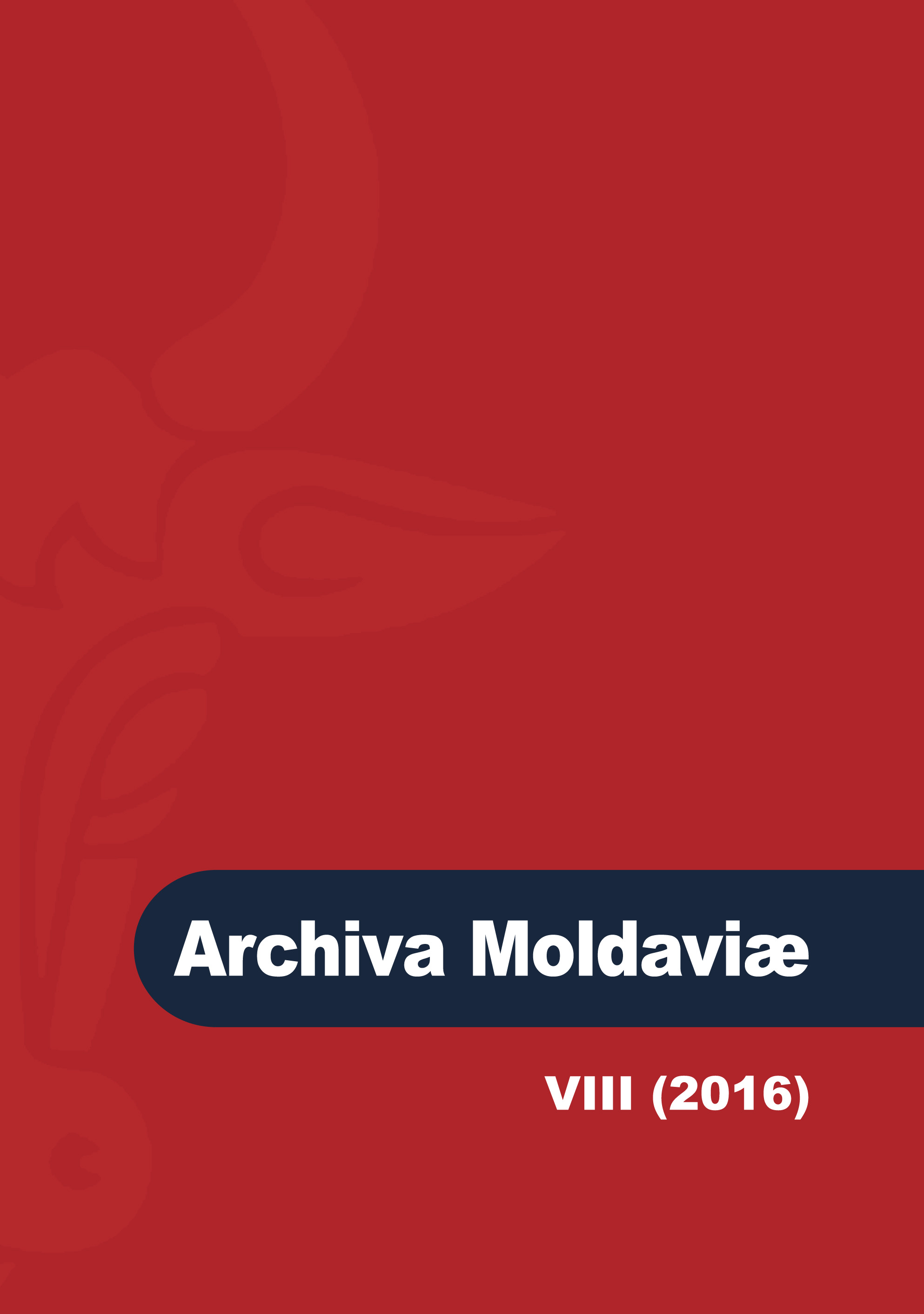
Keywords: Antonie Plămădeală; Securitate; Vladimireşti monastery; Legionary movement; communism
This article examines the life of the Romanian theologian Antonie Plămădeală (1926-2005) in the years1940s-1950s. More specifically, it discusses his experience with the Romanian secret police (Securitate) and the way in which Securitate portrayed him in its dossiers written on him in this decade. This article also examines Plămădeală’s arrest and years in prison in the mid 1950s, incarcerated for alleged ties to the Legionary Movement, organization known for its fascist, paramilitary and anti-Semitic activity and rhetoric. Although the Securitate files provide significant evidence pertaining to Plămădeală’s association with legionaries, through his ties to the Faculty of Theology at the University of Bucharest as well as to the Vladimireşti Monastery, Securitate’s evidence pertaining to Plămădeală’s being a member of this movement is inconclusive. Thus, it is likely that Plămădeală may have not been a legionary. In regards to Plămădeală’s experience as a political prisoner, this article suggests that Plămădeală’s prison years were destructive to his inner being and identity.
More...
Keywords: antisemitism;evrei;legionarism;Mihail Sebastian;Corneliu Zelea Codreanu
Studiul structurează evoluția comunității evreiești din România în anii pre mergători Holocaustului din perspectiva a două atitudini care au marcat decisiv percepția publică asupra evreilor în perioada interbelică: antisemitismul și legionarismul. Relația dintre identitatea evreiască, antisemitism și legionarism este cercetată pe câteva paliere de analiză. Un prim palier este orientat spre analiza romanului De două mii de ani… de Mihail Sebastian și a Prefeței scrise de Nae Ionescu, pentru a pentru a înțelege felul cum comuni- tatea evreiască — prin cazul exemplar al lui Sebastian — și-a construit propriul discurs identitar într-o perioadă în care antisemitismul devenea dominant în discursul public. Un al doilea palier al cercetării este direcționat spre analiza originilor intelectuale ale anti semitismului în raport cu paradigma statului național. Prestigiul cultural al intelectualilor reprezentativi ai secolului XIX, dintre care se detașează Mihai Eminescu, a fost folosit ca sursă de legitimare pentru a justifica ultranaționalismul și antisemitismul care au susținut apariția și evoluția legionarismului. În acest sens, ideologii legionarismului au stabilit o linie de continuitate între propriile convingeri antisemite și ideile promovate de fondatorii antisemitismului românesc, pentru a scoate în evidență faptul că legionarii sunt reprezen- tanții genuini ai poporului român. Al treilea palier al cercetării investighează istoria intelec- tuală a legionarismului privit ca mișcare palingenezică centrată pe crearea „omului nou“ considerat chintesență a românității. Pe lângă teme și motive specifice teologiei ortodoxe, pe care le-a integrat în propria doctrină, legionarismul își are sursele intelectuale în discursul palingenezic al naționalismului romantic și al mesianismului istoric din prima jumătate a secolului XIX. Literatura apologetică legionară se intersectează cu textele „tinerei generații“, în proiectul comun al unei noi spiritualități, al regenerării naționale, al căutării autenticității. Intelectualii marcanți ai „tinerei generații“ s-au regăsit în fervoarea legionară, ceea ce le-a justificat critica societății românești interbelice, revoluția spirituală și regenerarea prin distrugere, antisemitismul, alimentând o ideologie a excluderii și a urii, care a făcut posibil totalitarismul de dreapta, autoritarismul antonescian, pogromurile și Holocaustul. Analiza resorturilor și implicațiilor care au stat la baza relației simbiotice dintre activismul politic al Mișcării Legionare și manifestările culturale ale „tinerei generații“ raportate la comunitatea evreiască reprezintă în ultimă instanță miza acestei cercetări.
More...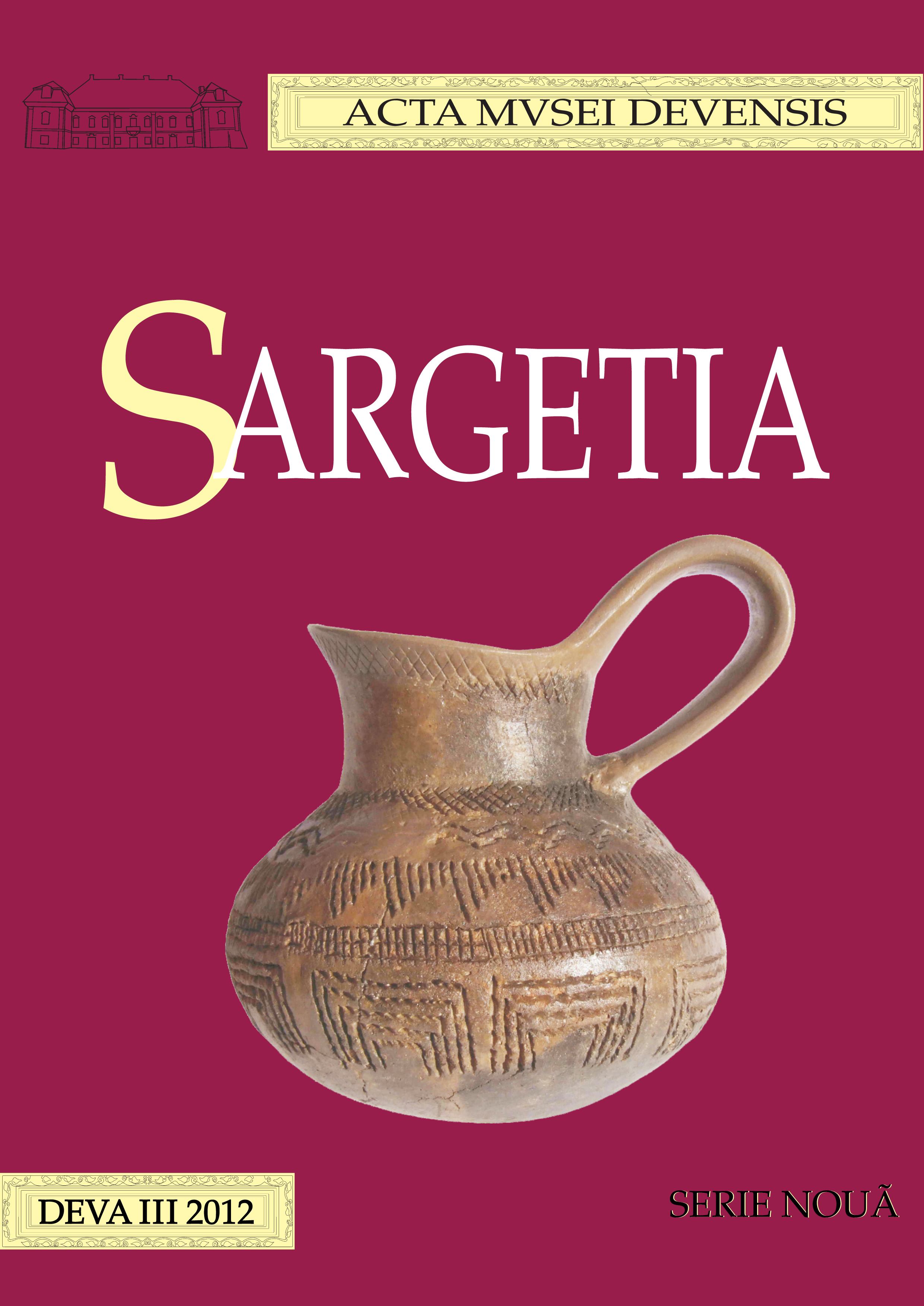
Keywords: earring; cemetery; treasure; silver; bronze; gold
Earrings decorated with simple spherical pendants were found, up until now, in 32 localities with 34 sites, on the present-day territory of Romania. The author analyses only those earrings with pendants without ornaments, or with one decoration on the middle of the pendant. The discussion was focused on the types of rings, pendants, the way in which pendants were fixed on the rings, and on the structure of the earrings. The earrings were found in treasures (3), cemeteries (22), settlements (2) or from unspecified findings (7). Their chronology covers a large time-span, from 12th to 17th centuries. They were spread mostly in Moldavia, Wallachia and Dobrudja, but only exceptionally in Transilvania. The decoration is a common one for the medieval craftsmanship, but the structure of the earrings proves a strong Balkanic (especially for the southern regions of Romania) or Russian (for the towns from northern Moldavia) influence.
More...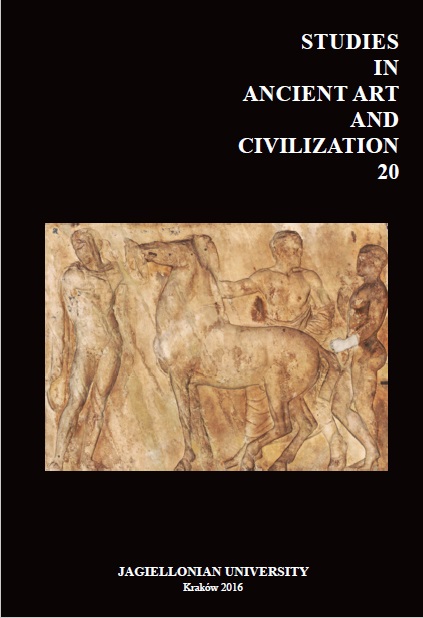
Keywords: Barrow; amphorae; stamps; Thasos; magistrate; manufacturer
The article presents an analysis of the amphora material from the excavation of grave no. 2 of the Scythian burial mound no. 7 near the village of Crihana Veche in the Republic of Moldova. In the burial mound of the local aristocrat, which was twice robbed in ancient times, along with the remnants of ornaments, weapons, and other objects used in the funeral ceremony, fragments of Greek amphorae were found (both in the burial and in the grave goods), which belonged to only one Greek center of production – Thasos. More than 27 Thasian amphorae in which expensive wine was brought in, as well as other ritual funerary objects, indicate that the man buried there had a special position in the local hierarchy. Also important for research are five amphora stamps on the handles of the Thasian amphorae, which confirm the dating of amphora fragments and indicate the exact sequence of activity of two Thasian magistrates, which previously did not have a basis of support. This funerary complex is singular for the fact that only Thasian amphorae of the same type were found in the burial (usually Heraclean amphorae were put in Scythian burials), which indicates the uniqueness of this complex in the territory between the Prut and Dniester Rivers, and the north-west Black Sea region as a whole.
More...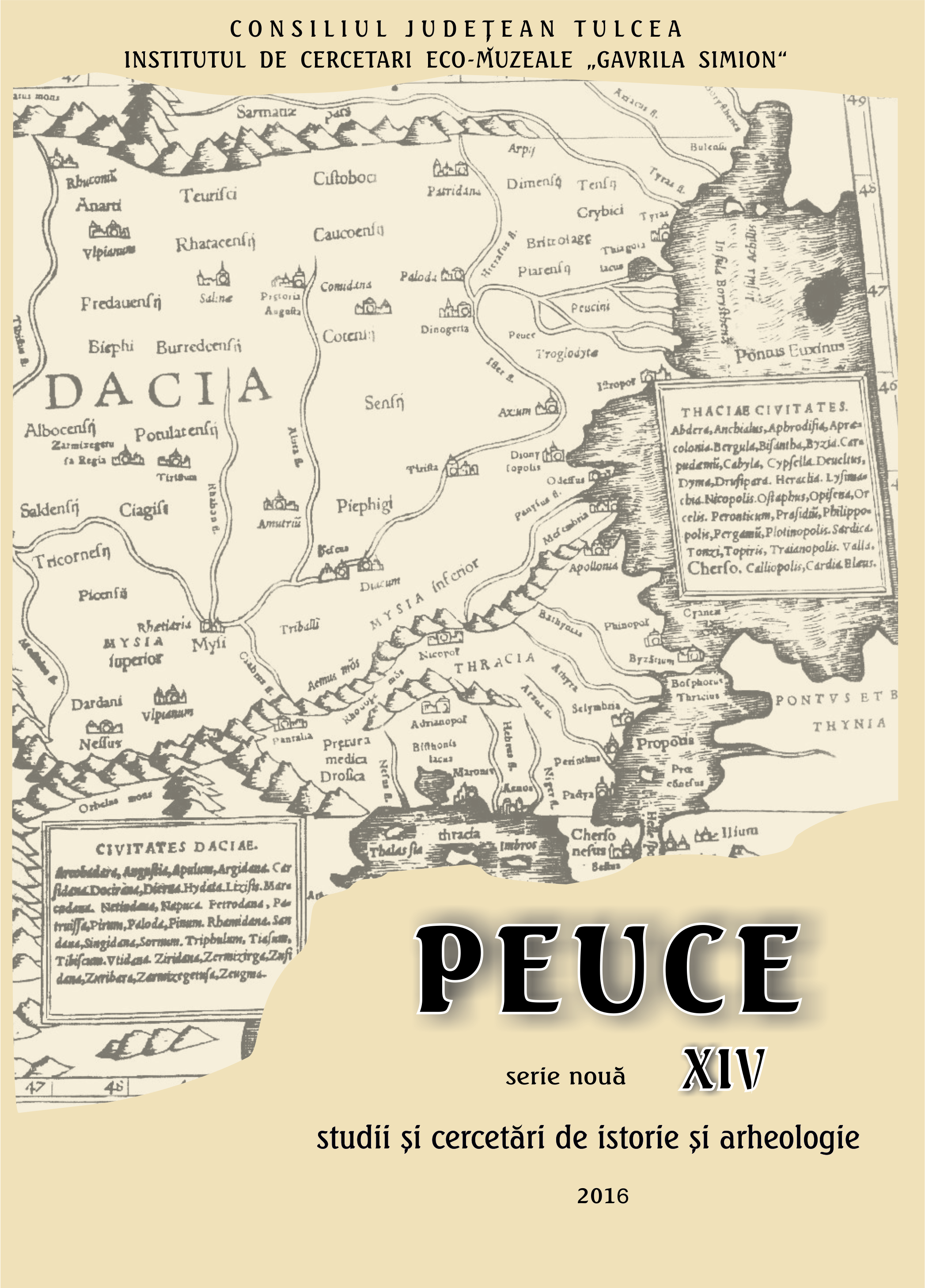
Keywords: hellenistic age;Orgame;Pontus Euxinus;Sinope;amphora stamps;
This study is dedicated to a series of 49 amphora stamps of Sinope found during the excavations at Orgame-Argamum (Jurilovca, Tulcea County) after 1992. The new stamps add to the previously published 44 stamps, both series revealing analogies with astyonomes and producers. The stamps of Sinope found at Ogame-Argamum provide an opportunity to resume the subject of Sinope amphorae’s circulation at this site and to refine, by comparison with the amphora stamps identified in other west Pontic fortresses, the hypotheses regarding the role of Orgame-Argamum in the trade with Sinope.
More...
Keywords: Protohistory;mythology;Romania;Surcea;Iron Age;
The presence of the Celts in Transylvania during the middle La Tène period was neither ephemeral nor devoid of consequences. Most likely, their mythological legacy materialized in local late La Tène iconography (e.g. "the knight with bird of prey" of Surcea or the "female triad" of Lupu). Despite the changes to the regional collective identities illustrated in the historical appearance of the Dacians, myths of Celtic tradition became integrated in the cultural memory of local elites of the 1st century BC. Under these circumstances, the alleged antagonism between Celts and Dacians, emphatically incorporated in the Romanian historiography from the testimony of Strabo (VII 3, 11), should be regarded with a critical eye. Beyond the conflict between Burebista, king of the Dacians and Getae, and Critasiros, king of the Boii and Taurisci, many indicators of a particular trans-regional cultural solidarity should be better distinguished, conceived and accepted. Most likely, habits and ideological patterns of central European (Celtic) origin played a fundamental role in the genesis of late La Tène culture in pre-Roman Dacia.
More...
Keywords: Durostorum;Moesia Inferior;Firmalampen;pottery workshops;lucerna;lamp moulds.
The Lower Danube Museum of Calarași stores over 1,400 Roman lucerna oil lamps, most of them found by the author of this paper during surveys at the civilian settlement of Durostorum (Ostrov-Farm 4). Amongst them, 617 are of Firmalempen type, whose marks we hereby briefly review. The artifacts, of various qualities, bear the marks of workshops/pottery makers from the Empire’s western or nearby provinces. The presence of moulds and scrap artifacts are indicative of the intense economic and production activities in the region. Even though many were found accidentally or during rescue surveys, the dating of the settlement ascribes the majority of the artifacts described below to the early 2nd-late 3rd century AD.
More...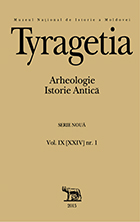
Keywords: funeral inventory; cremation burial, horseman warrior
In 2011 the National Museum of History of Moldova came into possession of a lot of important archaeological pieces. The composition of the set of artifacts were - bronze situla, ceramic tureen-lid; iron sword and sheath; iron spearhead; iron shield umbo, circular in plan and pyramidal in section; double spiral iron bracelet with cufflinks terminations, an iron ring with side button to which was added an iron clamp – made us assume that they are part of the inventory of a cremation grave of a horseman warrior. Anthropological study of cremated bones made it clear that the tomb belonged to a young man of about 14-16 years.
More...
Keywords: Callatis; amphora stamps; rescue archaeology
During rescue operations in Mangalia (Romania), in the area of the ancient Callatis there were found the remains of the building structures that are 50 meters from the sacred area of the ancient city. Numerous amphora fragments were identified, among them there was a small collection of amphora stamps - 16 samples, of which five belong to Sinop, 3 stamps - to Rhodes, 2 Knidos stamps, and to the amphora production of Kos, Paros, Thasos and Heraclea Pontica there were attributed by one stamp. For two stamps it was impossible to determine centers of production. Chronological framework of this small collection includes the period of time from the 3rd century to the 40-20-ties of the 2nd century.
More...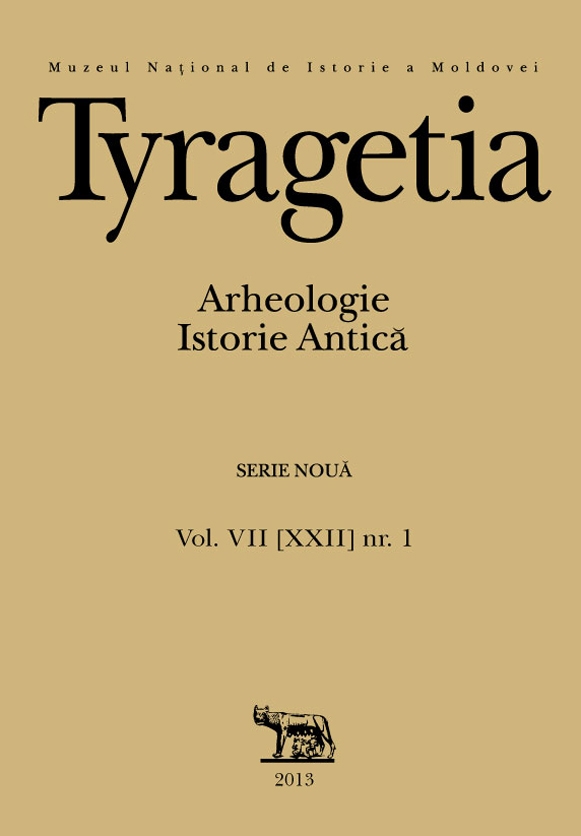
Keywords: Poieneşti-Lucaşeuca culture; chronology; periodisation
In diesem Beitrag wurden die Chronologie und Periodisierung der Poieneşti-Lucaşeuca-Kultur analisiert. Vier Phasen der Entwicklung der Bestattungen aufgrund der Kombinationen der Gegenstände vom Grabinventar von isolierten Gräberfeldern / Gräber aufgebaut wurden. Trotzdem trifft man höchst selten in den Siedlungen des Poieneşti-Lucaşeuca-Typs auf das chronologish erheblich Material, konnte ich die Chronologie für einigen Le- bensräume zu gründen. Ich habe vier chronologische Phasen abgeteilt durch eine Analyse der Chronologie der Bestattungen und Siedlungen des Poieneşti-Lucaşeuca-Typs die in einer einheitlichen Tabelle vereignigt wurden. Man kann diese Etappen mit den Phasen LT C1b, LT C2, LT D1 und LT D2 der mitteleuropäischen keltichen Kultur synchronisieren oder mit den Etappen a, b, c und d der jüngeren vorrömischen Eisenzeit nach Hachmann, die in absoluten Daten entsprechen dem Ende 3en Jh. - letzten Viertel des 1es Jh. v. Chr.
More...
Keywords: Thracian-Getae; Saharna Mare; rampart; settlement
This article presents information on the findings relating to the Thraco-Getian period, which have been identified as a result of archaeological excavations in 2009-2012 on the site of Saharna Mare.In examining orthophotomaps and the results and geomagnetic prospecting there was discovered a new defensive line traced over 650 m to the north, east and south sides of the cape. Its ends are connected to the "wall" on the west side, thus forming an integral defensive system surrounding the fortress on all sides and having an area of approximately 6 hectares. This recently discovered defensive line represents a "rampart" barely visible on the current surface of the soil, having at the base a width of 3 m and a height of about 0.3-0.4 m. Toward the east this "rampart" meanders, forming eight bastions grouped in four on the northern and southern flanks.As a result of archaeological investigation it was found that the identified "rampart" is the remains of a defensive wall built of two rows of wooden poles dug vertically into the mainland. The space between rows was filled with stones and earth, thus forming a fortification of about 1.1-1.6 m width.In the settlement there were also examined two above-ground structures, 36 household pits and fairly rich and varied inventory attributable to the 8th/7th - 3rd centuries BC.Judging by its strategic location, powerful defensive structures, and by the findings found in the area of the site, it can be assumed that the fortified settlement of Saharna Mare was an important economic, political, administrative and military center of the Middle Dniester region.
More...
Keywords: Greek Amphorae; Getae, Prut-Dniester interfluves; review
The article is devoted to a critical analysis of the article by A. Levinschi "Греческие амфоры на гетских памятниках лесостепи Днестровско-Прутского междуречья - центры и ритмы поступления (Greek amphorae on Getae sites in the forest-steppe area between the rivers of Dniester and Prut - centers and rhythms of delivery)" published in the journal "Stratum plus" № 3 for 2013. The author of this work, not being a specialist in ancient times and Greek amphorae in particular, using for his own scientific research our monograph "Amforele greceşti în mediul barbar din nord-vestul Pontului Euxin în sec. VI - începutul sec. II a. Chr. (Greek Amphorae in the Barbarian World of the Northwestern Coast of Pontus Euxinus in the 6th - Early 2nd Centuries BC)" (Chişinău 2007), decided to revise the dating of Greek imports in the barbarian world of Getae, trying to convince us, the professionals, and perhaps himself, that the spread of Greek imports (including amphorae) in the Getae environment refers only to the time interval limited by the 6th - late 4th centuries BC. The effort to prove this timing has become for A. Levinschi "a matter of his scientific life", and he persistently tries to bring his scientific research under this framework. In this article we have tried to comment page by page those arguments that we consider not only wrong, but obviously biased, and which are explained, apparently, not only by ignorance of the specifics of Greek amphorae and their epigraphy and by insufficient knowledge of the professional literature, but also by the fact that the author of the paper under review has analyzed not the material itself but only its illustrations.
More...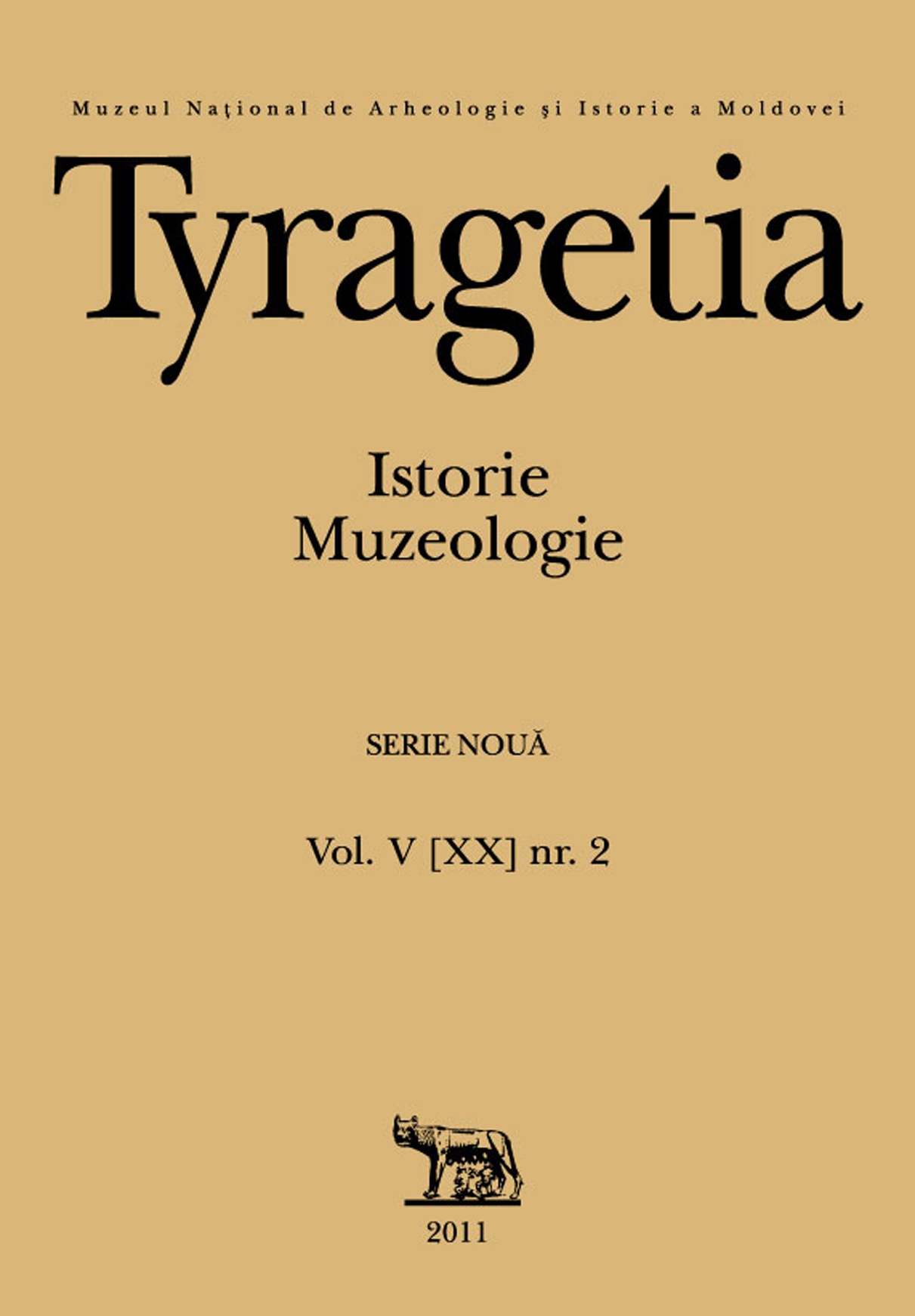
Keywords: Dobrudja dynasties; 14th century; international status
Au milieu du XIVe siècle dans les territoires situés entre le Danube et la Mer Noire s’organise le Despotat de la Dobroudja, un état de facteure bysantine, qui va s’affirmer comme la troisième liberté roumaine. Les titres détenues par les dynastes de la Dobroudja, celui de despote (δεσπότα) et de prince (dominus), employés par Dobrotici/Dobrotiţă, respectivement celui de ,,prince par grace de Dieu (misericordia dei, dominus)”, assumé par Ivanco/Ioancu, confirment, autant les liaisons du début avec l’Impire Byzantin mais aussi le changement de l’état de la Dobroudja dans une principauté monarchique, mais aussi le statut indépendants de leurs dirigeants.
More...